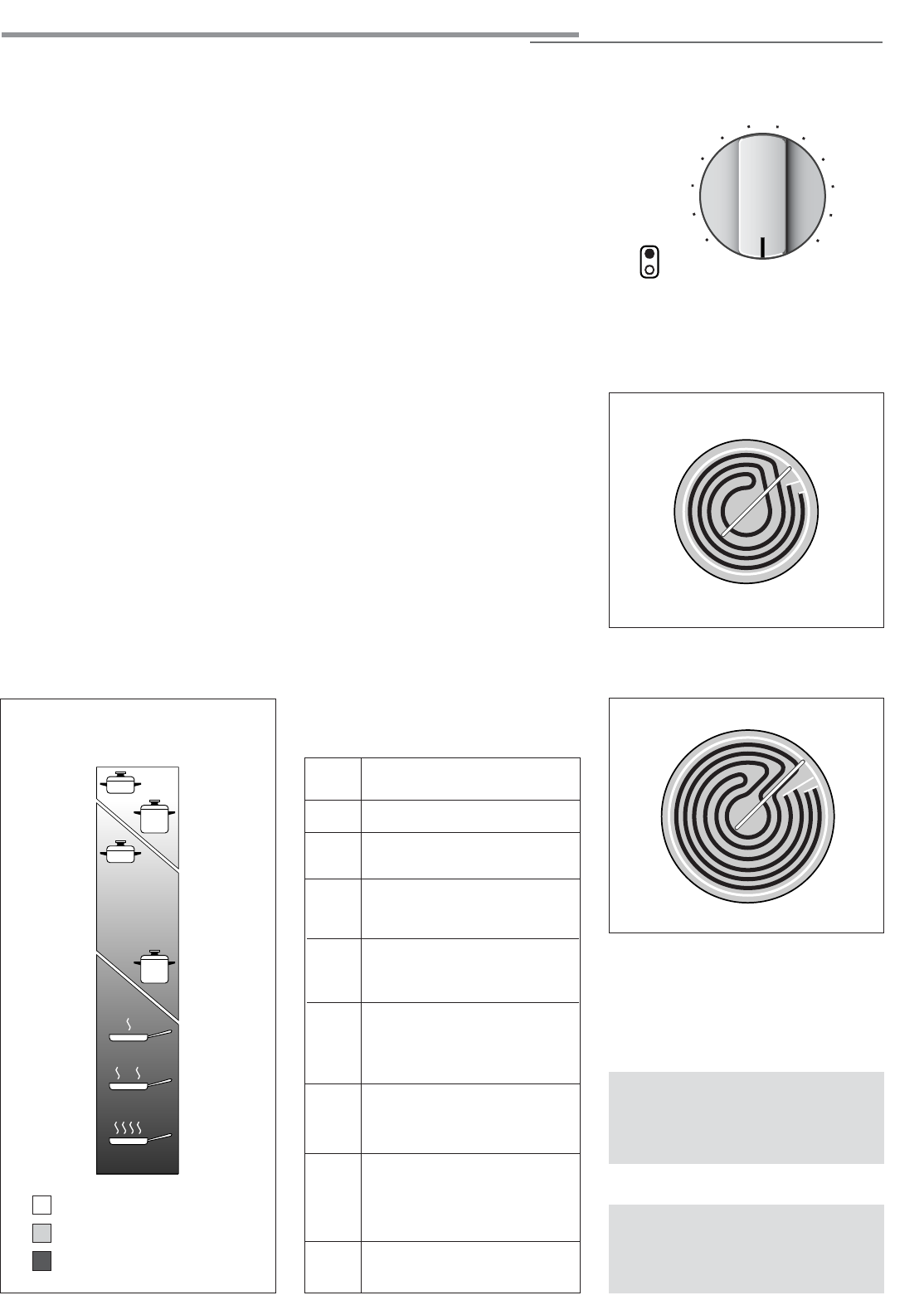
5
Caution! the cooking hob becomes
very hot during operation.
Keep children well out of reach.
Fig. 2.2b
Fig. 2.2a
1
3
4
5
67
8
9
11
10
12
OFF
2
Fig. 2.1
VITROCERAMIC HOB
The main characteristic of this pyroceram cooker top is that it permits rapid vertical trans-
mission of the heat from the heating elements below to the saucepans on top.
The heat does not spread horizontally, however, and therefore the glass stays cold only a few
centimetres from the hob.
The hobs are controlled by the continuous energy regulation switch (0÷12) (fig. 2.1).
The heat intensity can be regulated continuously from “OFF” to “12” (max).
VERY IMPORTANT: TO SWITCH ON, ALWAYS LIGHTLY PRESS THE CONTROL KNOB
THEN TURN IT.
Check that the hob is clean and then switch on by press and turning the control knob.
When the top is working, the pilot light will be on.
When the hob temperature is above 60°C, the corresponding indicator light will come on to
indicate that the hob is hot.
This light will stay on even after the hob has been switched off to indicate that the hob is still
hot.
The residual heat persists for some time after the hob has been switched off.
During this time avoid touching the hob and take particular care if there
are children nearby.
The light will go out automatically when the hob temperature drops below 60°C.
Do not scratch the cooktop with
cutting or sharp objects.
Do not use the cooktop as a
work surface.
using the vitroceramic hob
ᕢ
TYPES OF COOKING AREA
RADIANT ZONES
(Fig. 2.2a- 2.2b)
The heating element consists of electrical resistances which can operate together or
separately according to the setting of the energy regulator 0-12.
It reaches the required temperature very quickly.
Hob controlled by
continuous energy regulation switch
0 - 12
1
2
3
4
5
6
7
8
9
10
11
12
Fig. 2.3
= Warming
= Cooking
= Roasting - Frying
ELECTRIC HOTPLATE
USAGE TABLE
Type of cooking
Switched OFF
For melting operations (of but-
ter or chocolate)
To keep foods warm or heat
small quantities of water.
To heat greater quantities of
water and to whip creams and
sauces.
Slow boiling, e.g. spaghetti,
soups, boiled meats, to contin-
ue steam heating of roast
meats and stews.
For all kinds of fried foods,
steaks, cutlets and cooking
without a lid.
For browning of meat, cooked
potatoes, fried fish and for boil-
ing large quantities of water.
Rapid frying, grilled steaks,
etc.
Position
of switch
0
1
2
4
5
6
2
3
4
6
7
7
8
8
9
10
11
12














